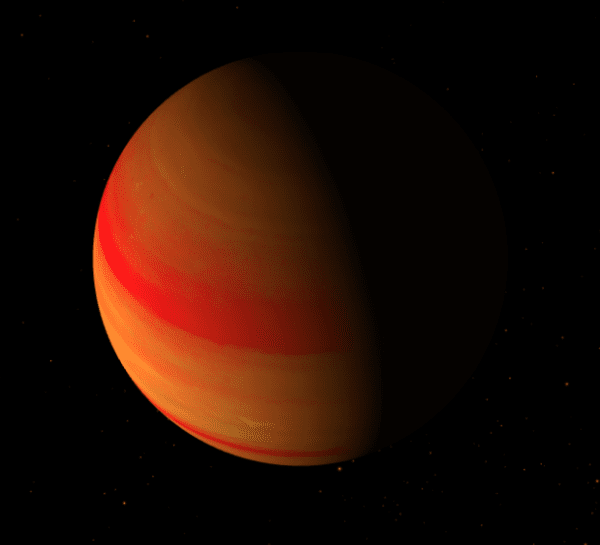JAMES WEBB: OTHER WORLDS
Hi, I’m Marley, the astronomer here at the Space Centre. This month, I wanted to check back in with the James Webb Space Telescope (JWST) and the science surrounding one of the themes we are exploring with it this year. In April, we shared and discussed scientific discoveries about galaxies with the help of JWST. This month, we will be checking out other worlds!
Exoplanets are the first thing people tend to think of when thinking about worlds that are not our own. They are important to study because these extra-solar systems can teach us about how planets and their systems evolve and change overtime. This, in turn, can help us understand why our own solar system is the way it is. And of course, there is the search for life elsewhere in our galaxy.
To search for life, astronomers start with searching for a world that life could survive on. This often means searching for the presence of water. One of JWST’s first scientific images was the transmission spectrum of the hot gas giant WASP-96 b, located within the southern sky constellation, Phoenix. The transmission spectrum shows scientists the amount of light blocked by certain atoms and molecules. In this case, WASP-96 b has a distinct water signature. The spectrum also indicates haze, and has evidence of clouds!
WASP-96b – Image Credit: NASA
Recent JWST exoplanet research concerns the TRAPPIST-1 system. In 2017, NASA announced that the system of seven planets has the largest-known number of planets in the habitable zone of the star. Depending on who you ask, there are three or four. These seven rocky worlds orbit the red dwarf star, TRAPPIST-1. Red dwarf stars are very common in the Milky Way, and can be quite active – pumping out a lot of harmful radiation. This radiation could erode away the atmospheres of neighbouring planets, reducing the possibility of those worlds being able to support life. JWST took a look and measured the temperature of the planet TRAPPIST-1 b, the planet closest to the star. In March 2023, the findings were released.
Unfortunately for TRAPPIST-1 b, it appears that it lacks any significant atmosphere. JWST measured the thermal emission coming from the planet and found the dayside temperature is about 200°C! This value is consistent with a model of the planet where there is no atmosphere, the surface is a dark colour, there is no redistribution of heat from dayside to nightside, and the planet has one side always facing the star. More research needs to be done to see if the other planets are in a similar situation.
Although, exoplanets are not the only worlds JWST is interested in studying. Other worlds can even be found in our own solar system. In mid-May, a paper about a water vapour plume from Saturn’s moon, Enceladus, was accepted for publication in Nature Astronomy. The team of researchers found that the rate at which the water plume is escaping from Enceladus could fill an Olympic sized swimming pool in only a few hours! The information gathered with JWST provides new context to research done with Cassini and ground based observations. In short, JWST performed very well observing Enceladus, and in the future we can expect the observatory to be the primary tool to study this ocean moon. You can learn more about the findings here.
By the time you read this blog, there is a chance that there will be more published material on the JWST with more updates and developments on exoplanet, or local solar system, science. You can check out the observatory’s observation schedule here. What other world would you like JWST to observe?
Astronomer’s playlist
Time
Activity
90+ mins
Travel to an Exoplanet
Pack your bags and start exploring exoplanets. Visit NASA’s Exoplanet Travel Bureau to get started. Then go on an exoplanet scavenger hunt.
Ask yourself: If you could travel to an exoplanet, which one would you like to visit and why?
120+ mins
Young Planetary Systems
JWST is not only investigating established planetary systems. With its ability to see into the mid-infrared part of the electromagnetic spectrum, JWST is able to see what is hidden in the dust of young planetary systems. Recently, astronomers have used JWST to investigate the debris disk of the star Fomalhaut, discovering two new belts of debris.
Learning about other young systems can help us better understand our own. To do that, astronomers have to know where to find the stars with disks of debris around them! In the Disk Detective citizen science project, you can help astronomers find the disks, using real scientific data.
120+ mins
Contribute to the discovery of exoplanets!
JWST can only studying the exoplanets we know of! Help researchers sort through data, refine data pipelines, and contribute to the discovery of new exoplanets with Planet Hunters Tess and Planet Hunters NGTS.

